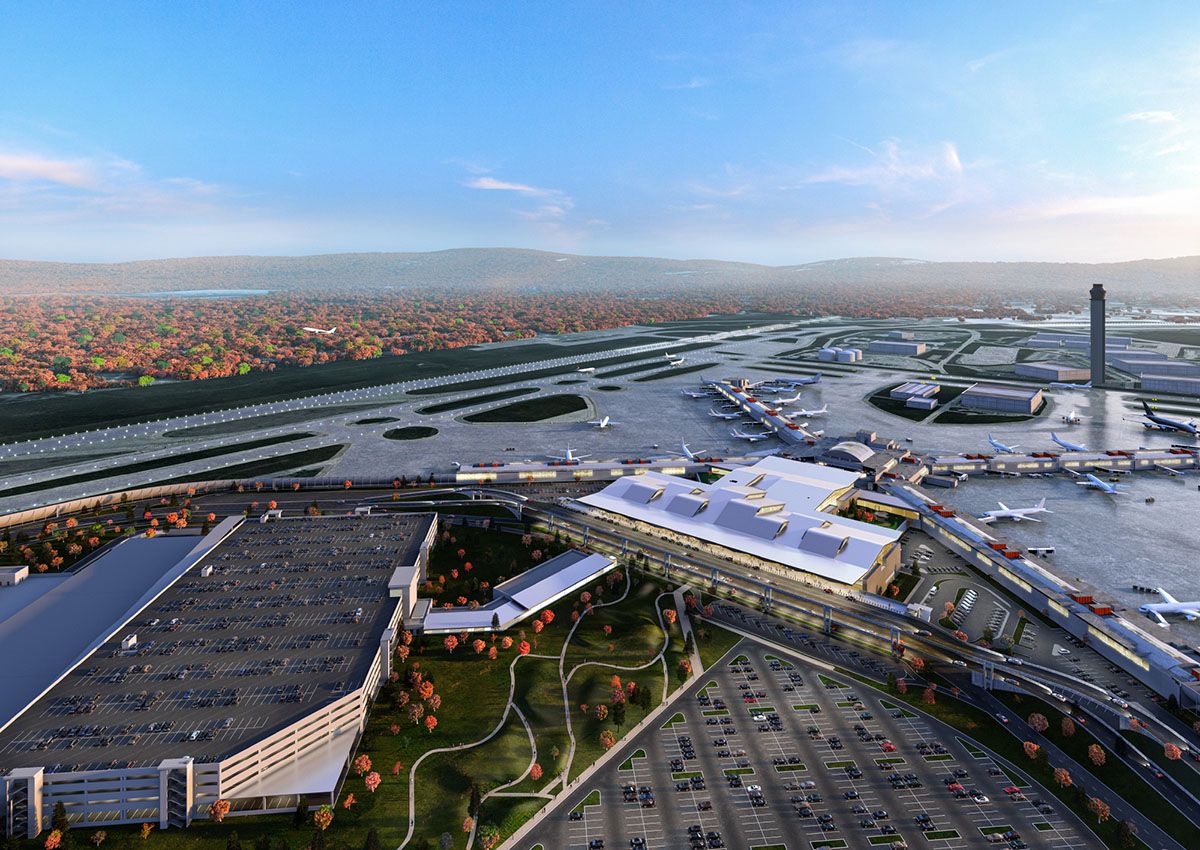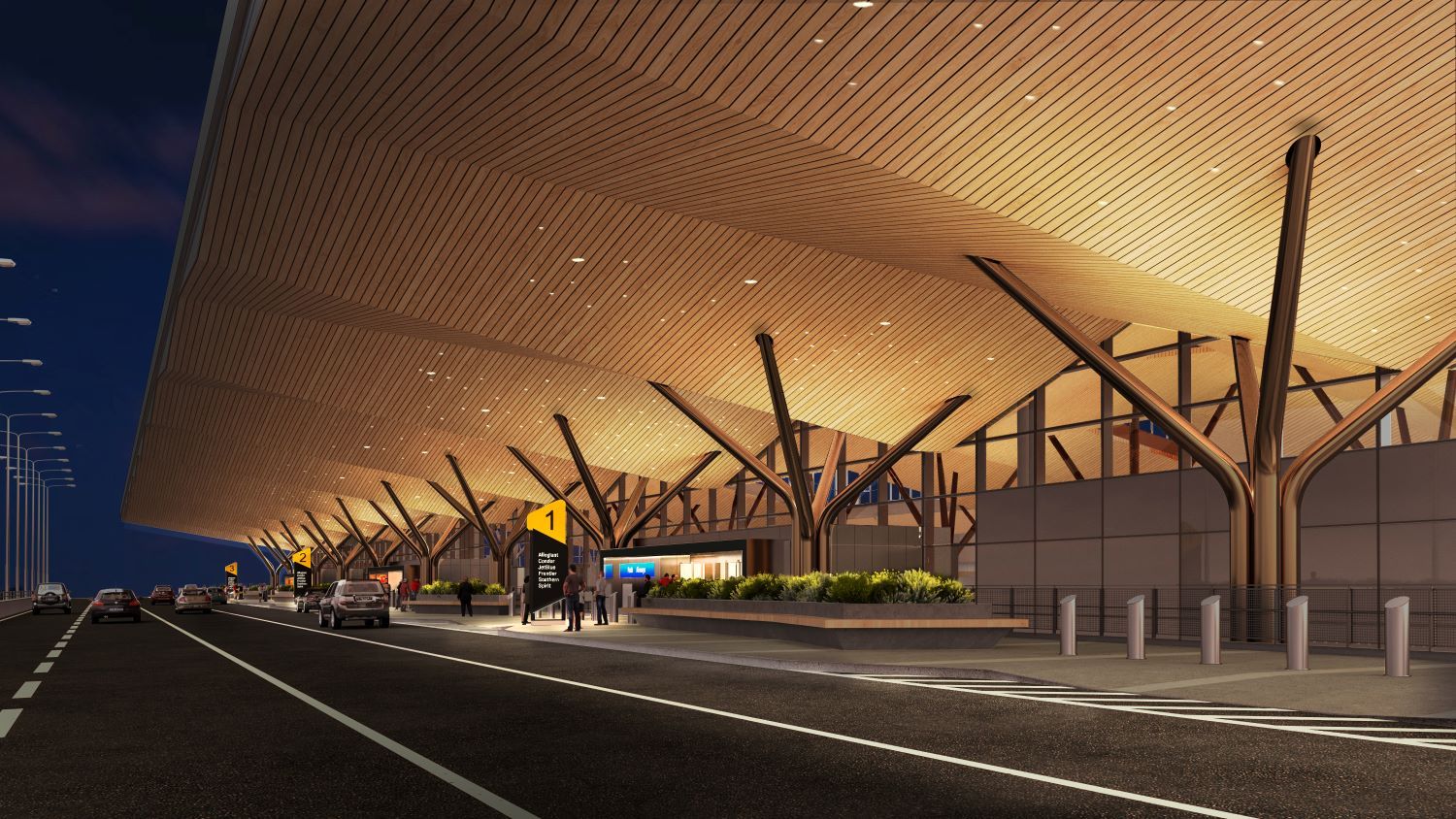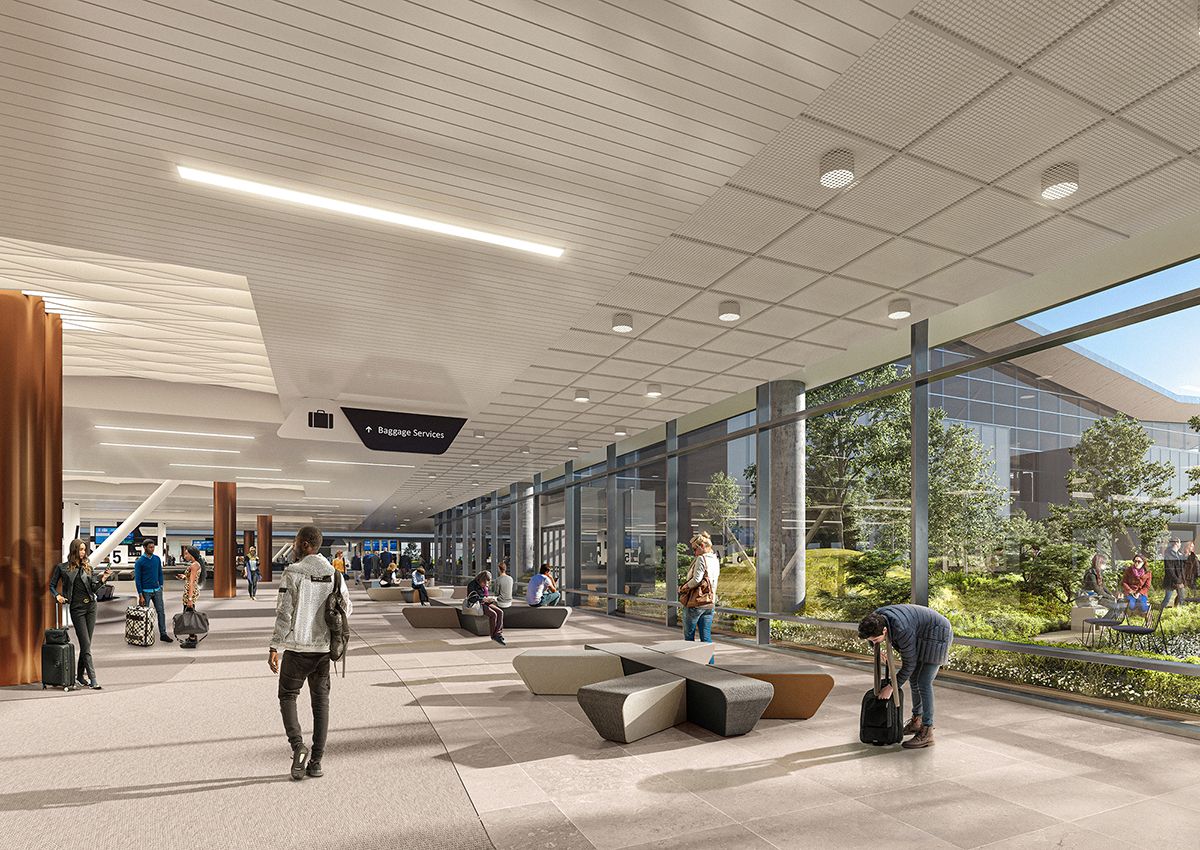In recent years, Pittsburgh International Airport
(PIT) has become an airport to watch regarding the future of commercial aviation, as a modernization project to consolidate its terminals into a more centralized area of the airport is nearing its completion. Beginning in the late 2010s, this large-scale building project was originally scheduled for completion in 2023. However, with COVID-19 throwing a wrench into the renovation plans, the project is now set to be completed in the autumn of this year.
Pittsburgh International was mentioned as being among the top US airports for affordable long-distance flights in a study cited by the Post-Gazette. For instance, Spirit Airlines
offers flights to Los Angeles and Las Vegas for approximately $219.46 and $236.36 respectively. With the new modern terminal almost complete and the airport offering competitive fares to popular destinations, do recent developments herald a bright future for the airport?
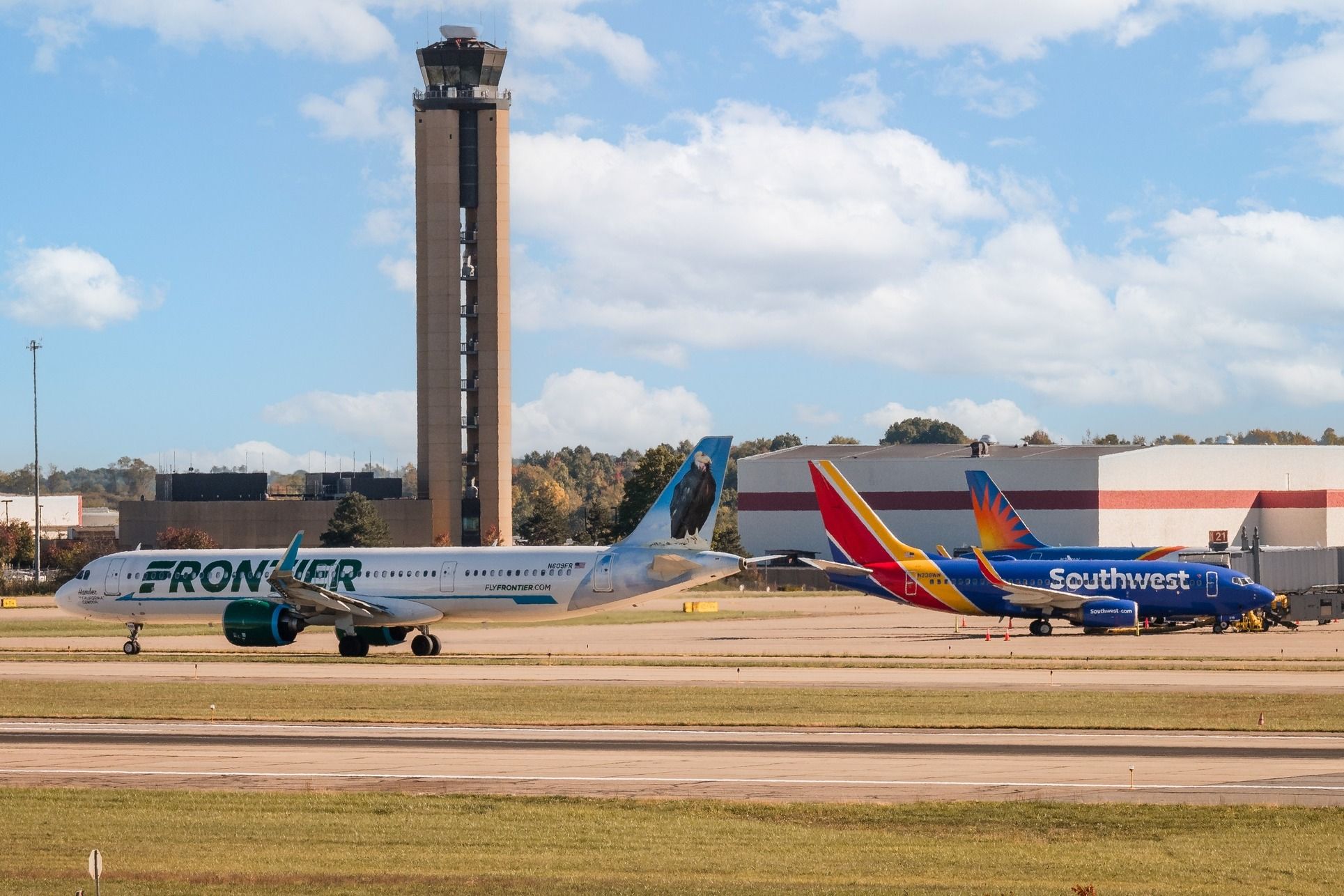
Related
Pittsburgh International Airport Records Busiest September In 20 Years
At 105.4% of passenger numbers from September 2019, this surpasses pre-pandemic levels and marks an excellent 8.5% rise from September 2023.
Photo: Pittsburgh International Airport
The airport of the future
Pittsburgh International first opened in 1952, being initially served by five airlines. It quickly became a small hub for international airlines, and remained so for over two decades. Following a billion-dollar expansion and rebuild that was completed in 1992, the airport was dubbed the ‘airport of the future’ by the New York Times, being considered one of the most innovative in the world.
When the airport was a competitive hub for US Airways, its X-shaped design and underground tram to transport passengers around the airport were great solutions for managing foot traffic. However, by 2013, US Airways was facing financial difficulties, and was merged with ![]() American Airlines
American Airlines
in December that year. Following this, the airline ended operations in 2015, leaving Pittsburgh International as a hub without a dedicated carrier.
Photo: Pittsburgh International Airport
An updated vision
In the years since then, Pittsburgh International’s design has proved to be irksome for passengers, with many passengers using the airport as a stop having to walk long distances and navigate three floors in order to get to their next destination. In 2017, the airport announced a plan to consolidate the separate terminal operations into one location, in the center of the ‘X’ as it were, and work to bring in an updated design for the airport began.
The renovation’s new design creates a new terminal for arrivals and departures, including areas for a single larger security checkpoint, where before there was more than one. It also re-locates the baggage-claim area nearer to the gates, drastically reducing the time it takes for passengers to get to their planes.
Included in the redesign is a new five-level parking area with space for 5,000 cars, according to The Points Guy, which will become the largest single parking structure in Pennsylvania. While this parking facility is ambitious, concerns have arisen as to its quality, as expanded upon in the article below:
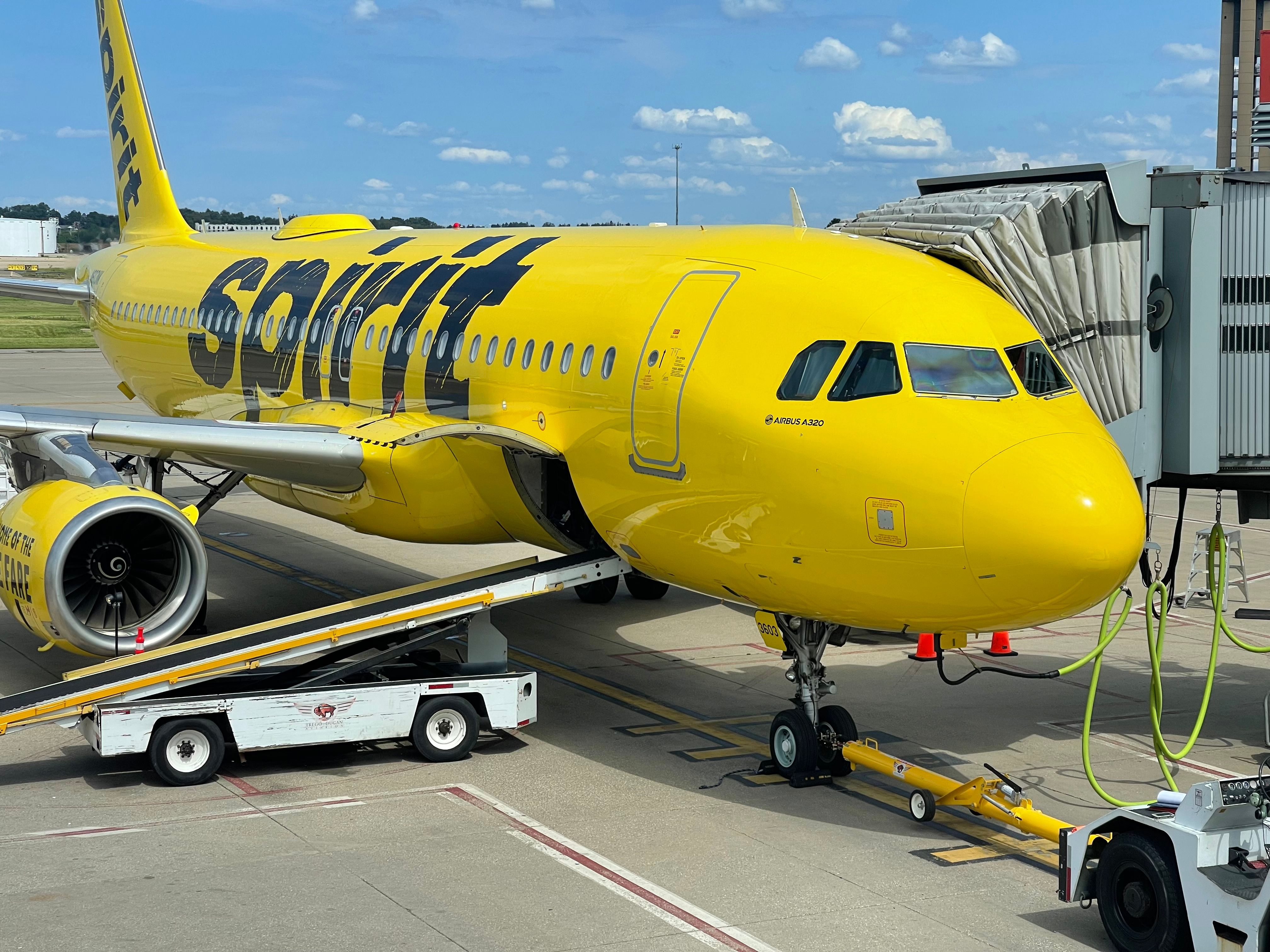
Related
Pittsburgh International Airport Defends Integrity Of New Parking Garage Despite Cracking
Whistleblowers have expressed concerns about the quality of the construction of the garage.
Pittsburgh International already has one futuristic aspect of its redesign in place, having become the first airport in the world to be powered by its own ‘microgrid’ in 2021. By utilizing natural gas and 10,000 solar panels, the airport can obtain power independently of the centralized power supply in the region. Christina Cassotis, the CEO of airport operator Allegheny County Airport Authority said the following about this aspect of the redesign, as cited by Natural Gas Intelligence:
“Pittsburgh International Airport is now one of the most site-hardened public facilities in the world while at the same time becoming more sustainable.”
This move will make the airport more resilient to power outages, and the need for such a change was highlighted by several high-profile power outages, which resulted in thousands of canceled flights and passenger disruptions at the airport in the past.
A significant economic improvement for PIT
According to PIT Transformed, an outlet dedicated to the new development project, the building of the new terminal will boost the economy in the area. The site breaks down the jobs coming into the local area as follows:
- An expected addition of 14,300 direct and indirect jobs.
- Creation of more than 7,800 direct temporary design and construction jobs, including 563 jobs in the pre-construction design. phase and 5,548 jobs during the construction phase.
- Indirect creation of more than 6,500 temporary spin-off jobs in the region.
The project is also projected to increase the lifespan of the facility by 40 years, generating approximately $2.5 billion in total economic activity. According to 2021 figures, it will bring in one billion dollars in direct labor income and 700 million dollars in gross regional product/value. In terms of local income tax, it will also benefit the local government by generating more than $27 million in state and local taxes.
Photo: Pittsburgh International Airport
Specific benefits in the area of baggage handling
The 35-year-old baggage handling system at Pittsburgh International is also receiving a significant upgrade. Before, it was a building-to-building trip for passengers, served by eight miles of conveyor belts and requiring a baggage tug process that has drivers traveling at least a half mile, one way, with empty baggage carts. The new system is more than 50% shorter, requiring much less energy and maintenance, according to Blue Sky News, Pittsburgh International’s dedicated news site.
The airport estimates that savings generated by the new baggage handling system are expected to be around two million dollars annually, and the increased lifespan of equipment used should be more than $5 million annually. With added savings from things like the new HVAC and lighting systems, the estimated annual savings may reach a total of $20.1 million. Paul Hoback, the Executive Vice President & Chief Development Officer for Allegheny County Airport Authority (ACAA) said:
“For airlines, the airport’s new design will result in lower fuel costs, cause less wear and tear on equipment and extend its life, and will increase efficiency. It’s a win-win for the airlines and passengers: The airlines will see higher productivity, and bags will be delivered to passengers in a timelier fashion.”
For a more in-depth look at how the new terminal looks currently, see many more pictures of the project’s progress in this article analyzing the $1.5 billion project thus far.
 Customer benefits of the project
Customer benefits of the project
Consolidation of terminal operations into a single centralized facility will have multiple benefits for customers traveling through the airport. Reducing the number of TSA checkpoints to one will be a significant factor in reducing confusion, and the streamlined passenger flow routes will reduce the time it takes from curb to aircraft by 50%, with time taken from international arrivals being reduced by 67%.
No longer will customers need to navigate a total of three levels, but there will be only one level change from curb to gates. The central exit terminal will also allow Meeters and Greeters to wait in one location, reducing the chances of passengers getting delayed after landing. There will also be a dedicated ground transportation center, allowing convenient access to public transport.
The change in layout will also increase the area available for concessions and retail, improving customer choices. For visitors, the new parking facility will also increase the number of covered parking spots by a factor of three. Overall, it looks to be a much nicer experience for customers, with no need for complicated tram systems or lengthy walks in the future.
Are more routes coming to Pittsburgh International?
A recent article from the Post-Gazette gave news that may lead to many more routes being served by Pittsburgh International in the coming years. The Allegheny County Airport Authority has proposed new federal guidelines that will give increased incentives to airlines using the airport. Thanks to new Federal Aviation Administration guidance, the authority has been granted the ability to cover up to three years’ worth of airlines’ seasonal flight landing fees for new destinations.
Pittsburgh International will also be able to use the incentive to entice airlines to add frequency to any existing flight, from two days per week to three, for example. Christina Cassotis explained that:
“Let’s just say somebody wants to add an extra flight to the West Coast, we can incent [-ivize] just that flight,”
The combined effect of the new development project and this incentive seems to have been having an effect on airlines, with the ultra-low-cost carrier Allegiant making its first Pittsburgh to Phoenix Sky Harbor flight on February 7th. This route is the airline’s new 10th longest, at 1,576 nautical miles (2,919 km). This route is one of several investigated in an article looking into new significant routes begun recently.
However, this route is nowhere near the airport’s longest. That title goes to the international ![]() British Airways
British Airways
flight to London Heathrow Airport
, which is 3,233 nautical miles (5,987 km) long. Additionally, at the end of 2023, Icelandair
launched Pittsburgh International’s second route to Europe, with a seasonal route to its hub at Keflavik International Airport
.
Photo: Pittsburgh International Airport
With landing fees being waived, more airlines may be more likely to open up routes to Pittsburgh in the near future, meaning a bright future for the airport. In the meantime, a full list of airlines that currently serve the airport can be found at Visit Pittsburgh.
Which are Pittsburgh International’s eight longest routes? Find out by reading this article!

